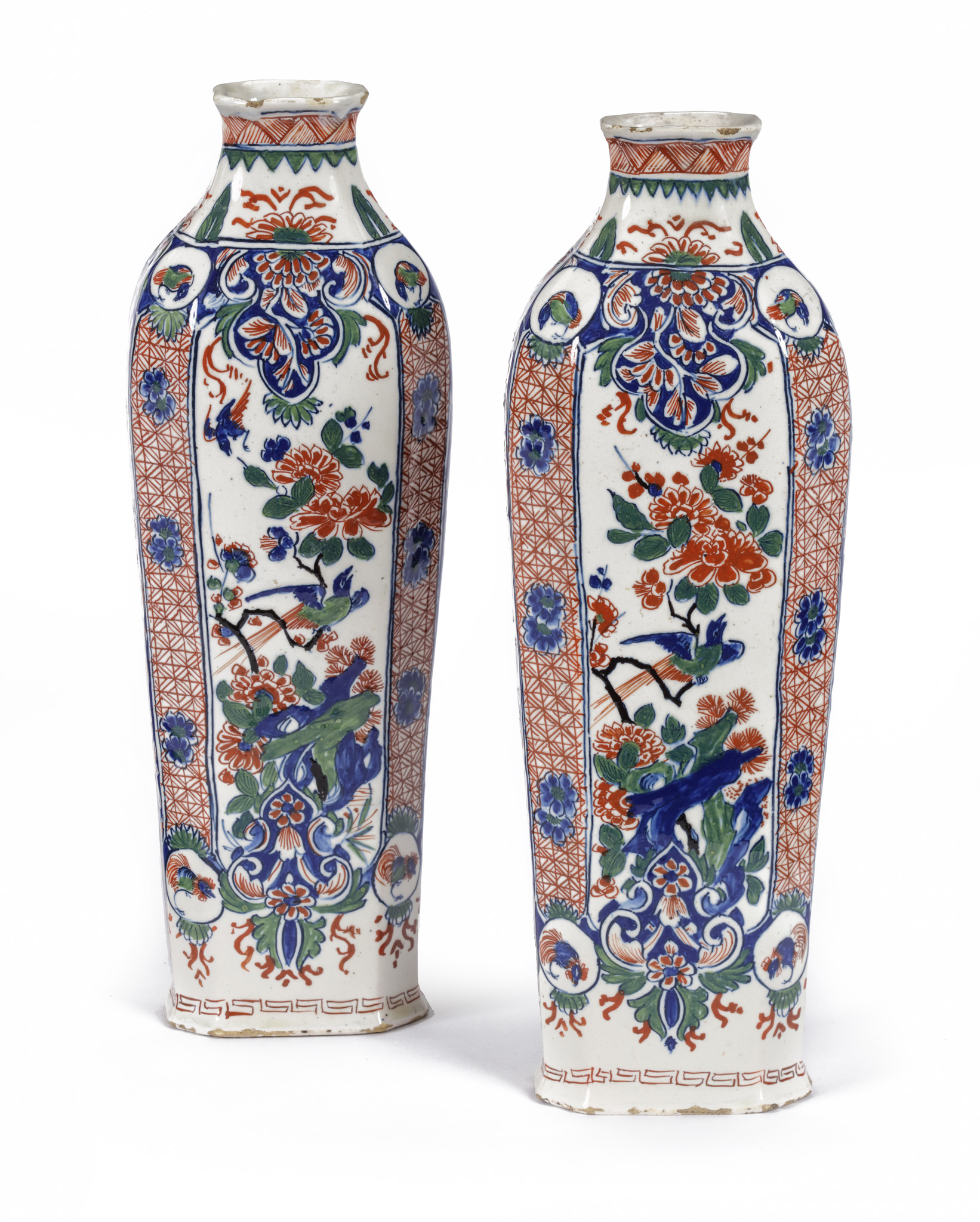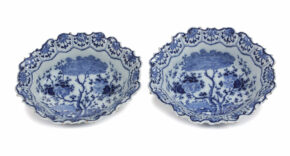![]()
Images on this website are licensed under a
Creative Commons Attribution-NoDerivs 3.0 Unported License.
OBJECT
•D2320. Pair of Polychrome Cashmere Vases
Delft, circa 1710
Each with a molded X mark
Of flattened octagonal form and painted on the front and reverse with a long-tailed bird in flight near or perched on the branch of a tree peony above flowering plants and rockwork within a conformingly shaped panel punctuated at the top and bottom with a floral lappet, the ends with a blueground panel decorated with a floral vine interrupted with an oval panel of a crowing cock, and the canted sides patterned with iron-redtrellis diaperwork superimposed with green-centered blue blossoms and terminating in roundels of birds, the rim with an iron-red herringbone border, and the footrim with a Greek key band.
DIMENSIONS
Height: 27.9 cm. (11 in.)
PROVENANCE
The Müller Collection;
Sotheby’s, London, June 23, 1964, lot 24
Staal Antiquairs, Amsterdam, 1964 (according to family archive);
Dutch Private Collection, Amsterdam;
The Vecht Collection, Amsterdam;
The Collection of G. Ephis, France;
PROVENANCE+
Up to the ‘Dutch Private Collection, Amsterdam’ provenance of this entry has been registered by notarial deed with independent and secure registration agency Provenance+ Amsterdam.
NOTE
The color palette on this pair of vases was given the descriptive title ‘cashmere’ for its likeness in color, and exotic, dense motifs to the fine woolen shawls that were imported from India and worn by high- class European ladies. As can be seen on the present set, the earthenware of this category has a reeded surface with a color scheme of blue, red and green, sometimes expanded with yellow or manganese. Although the Delft pieces were named after the fashionable textiles, the Delft potters were in fact inspired by the Chinese famille verte porcelain wares of the Kangxi period (1662-1722), which arrived in Europe at the end of the seventeenth century. Delftware painters also looked beyond China for further inspiration in designing cashmere pieces.
One such design source was the French baroque style that reigned during the age of King Louis XIV. Characteristic of this is the delicate use of arabesques and whimsical grotesques that originally derived from the Renaissance, and the combination of foliage with human and animal forms that prefigured the Rococo movement. Moreover, multiple garlands of flowers, draperies, scrolls, and pendants were added in order to form magnificent embroidered motifs. Since the production of these elaborate reeded pieces was probably very expensive, the cashmere palette enjoyed a brief, yet widespread success during the first half of the eighteenth century.
SIMILAR EXAMPLES
A pair of cashmere palette vases of similar shape is illustrated in the exhibition catalogue of Delft, 1976, p. 214, ill 24, cat. no. 109.









